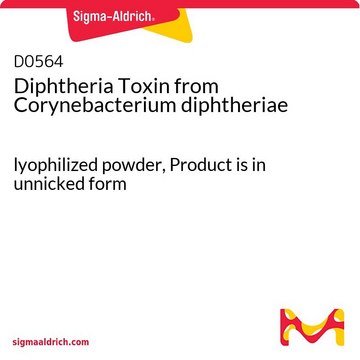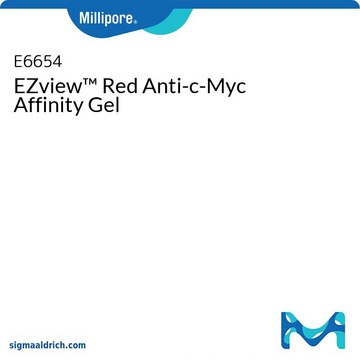E3403
EZview™ Red Protein G Affinity Gel
Synonym(e):
EZview Affinity Gel, Protein G Affinity Gel
About This Item
Empfohlene Produkte
Form
liquid
Qualitätsniveau
chemische Klasse(n) des Analyten
proteins (Immunoglobulins of various mammalian species)
Methode(n)
affinity chromatography: suitable
immunoprecipitation (IP): suitable
Kapazität
≥8 mg/mL, gel binding capacity (rabbit IgG)
Lagertemp.
−20°C
Allgemeine Beschreibung
Anwendung
Leistungsmerkmale und Vorteile
- Increased visibility - Red color reduces risk of incidental aspiration
- Improved recovery of target protein by reduced accidental loss
- Higher reproducibility - More consistent yields
Physikalische Form
Rechtliche Hinweise
Lagerklassenschlüssel
10 - Combustible liquids
WGK
WGK 3
Flammpunkt (°F)
Not applicable
Flammpunkt (°C)
Not applicable
Analysenzertifikate (COA)
Suchen Sie nach Analysenzertifikate (COA), indem Sie die Lot-/Chargennummer des Produkts eingeben. Lot- und Chargennummern sind auf dem Produktetikett hinter den Wörtern ‘Lot’ oder ‘Batch’ (Lot oder Charge) zu finden.
Besitzen Sie dieses Produkt bereits?
In der Dokumentenbibliothek finden Sie die Dokumentation zu den Produkten, die Sie kürzlich erworben haben.
Kunden haben sich ebenfalls angesehen
Unser Team von Wissenschaftlern verfügt über Erfahrung in allen Forschungsbereichen einschließlich Life Science, Materialwissenschaften, chemischer Synthese, Chromatographie, Analytik und vielen mehr..
Setzen Sie sich mit dem technischen Dienst in Verbindung.











